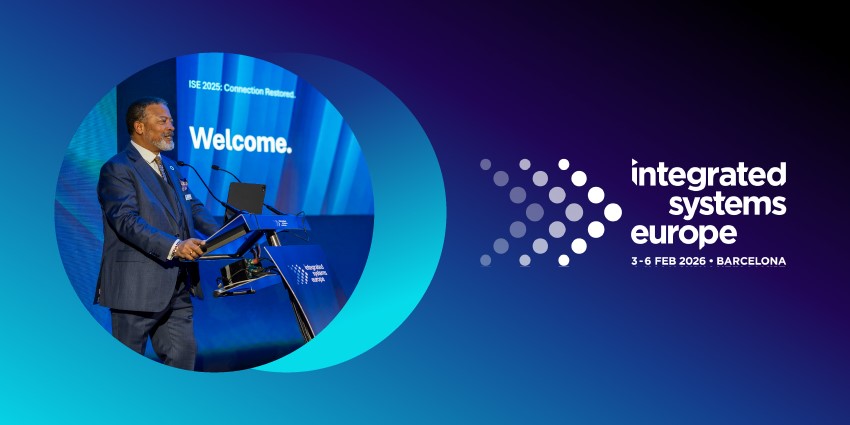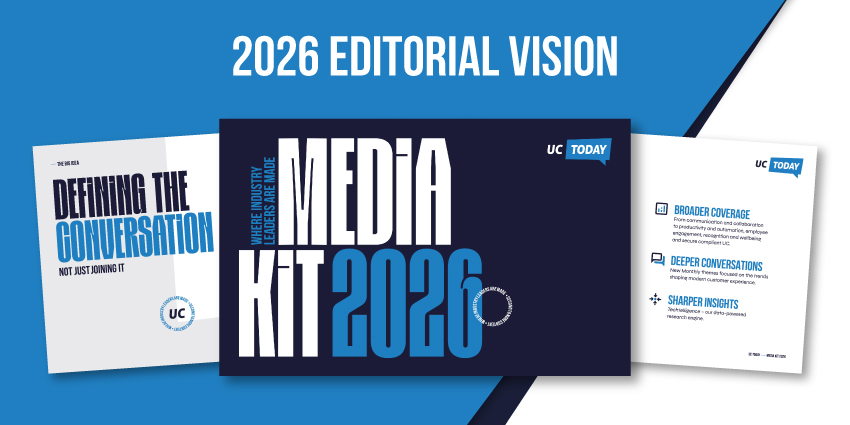If you’ve stumbled onto this conversational intelligence enterprise guide, you’re probably already nursing a few of the most common pain points facing businesses today. How many times do your teams finish up a meeting, assuming everyone’s on the same page, just to realize a few hours (or days) later that no one really knows what they’re supposed to be doing next?
How often do your customer-facing teams miss out on an opportunity because a key detail from a call is just not captured or identified?
Across enterprise organizations, conversations fly in every direction, calls, Zoom sessions, chats, voice notes, support tickets, team huddles, you name it. But despite all that dialogue, most companies are still making decisions in the dark. Why? Because they’re not tapping into what those conversations are actually telling them.
That’s where conversational intelligence (CI) comes in. It’s not just another fancy way to use AI for day-to-day workflows. It’s the critical tech that listens, interprets, analyzes, and surfaces insights from conversations, automatically. If you think it’s about time you surfaced more value from every discussion your teams are having, this guide is for you.
Conversational Intelligence Enterprise Guide: What is Conversational Intelligence?
Conversational Intelligence (CI) software and solutions give companies the tools they need to analyze conversations (live or recorded) with artificial intelligence. It allows organizations to access insights from discussions that human beings might overlook, forget about, or misinterpret.
CI tools are powered by the same tech many contact centers are already familiar with: natural language processing, speech recognition, sentiment tracking, emotion detection, and machine learning. Here’s an insight into how it works.
In the contact center, your team member calls a customer (or vice versa). The conversational intelligence system runs in the background, listening to the call.
The system notices that the buyer shows hesitation or caution when the team member mentions pricing. It sends an alert to a manager, who silently sends a message to their colleague, giving them advice on deals to suggest, boosting their chances of closing the deal.
Conversational intelligence isn’t just for calls with customers. Internally, CI tools can listen into meetings, auto-summarize action items, flag questions that aren’t answered, and even automatically assign tasks to staff at the end of the meeting.
It’s not just about “supervising” calls with AI. CI gives teams the ability to remember everything, notice subtleties in conversations, and respond smarter in every discussion. Demand
Conversational Intelligence Enterprise Guide: UC & CI
As we mentioned previously in this conversational intelligence enterprise guide, CI tools are incredibly useful in the contact center. Most organizations use the capabilities of these tools (like sentiment analysis and keyword tracking) to improve customer satisfaction and conversion rates. However, CI also has a role to play in unified communications.
In fact, most collaboration platforms have built-in CI features. In Microsoft Teams, for instance, CI capabilities in Copilot can help with meeting summarization, data tracking, transcription, and even sentiment analysis.
Zoom’s AI Companion can also generate meeting summaries, provide real-time suggestions to team members during calls or meetings, and even assign tasks to specific staff members after a meeting. Cisco Webex also offers built-in tools for emotion tracking and multilingual analysis, breaking down barriers for global teams or companies serving diverse customer groups.
There are also countless third-party integrations for communication tools, like Cresta and Salesken. These solutions connect with communication apps and offer access to advanced features like sales intent recognition, escalation triggers, and keyword analysis. Some even auto-update Salesforce fields based on what was said in a call without human intervention.
Conversational AI in the UC stack does more than just help team members enhance calls with customers. It can also provide business leaders with valuable insights into team engagement rates, productivity, coaching opportunities, and strategies for boosting performance.
Conversational Intelligence Enterprise Guide: Use Cases
One of the main things you should take away from this conversational intelligence enterprise guide is that CI solutions are a lot more versatile than you might realize.
Investing in CI isn’t just about keeping up with the latest AI trends or chasing hypothetical opportunities. These tools instantly make an impact on the everyday workflows that countless companies struggle to optimize. Sales teams don’t just meet quota, they exceed it. Compliance teams don’t just keep up, they get ahead. Leaders don’t need a crystal ball to understand team dynamics. Customers feel seen, heard, and understood in every interaction.
Here’s a closer look at some of the key use cases:
Real-Time Sales Coaching
Sales conversations are absolutely packed with valuable insights – but most of them are lost in translation, overlooked by staff struggling to keep up with notetaking, or buried in the background. Conversational intelligence changes all that.
The CI tools in Microsoft Dynamics can track keywords, brands mentioned in sales calls, and customer emotions. They can also provide insights into each seller’s conversation style, how well they present pitches, and where they struggle to handle objections, helping companies develop more effective, personalized training programs.
Some systems can even deliver real-time coaching. Gong or Cresta can pick up on subtle but crucial signals: the pause before a price objection, the confidence in a competitor’s name drop, or the moment a buyer shows genuine interest. They can then give sales professionals tips on what to do next.
The overall outcome is more intuitive sales teams who can close deals faster, improve customer satisfaction rates, and access the training they need without overwhelming managers.
Compliance Monitoring and Risk Reduction
Improving compliance is one of the most valuable use cases worth mentioning in this conversational intelligence enterprise guide. These days, compliance is not just the responsibility of highly regulated industries like finance or healthcare; it’s everyone’s.
While integrating AI tools into workflows comes with its own compliance risks, it can also give companies a more effective way to stay ahead of threats. In all industries, scripts can be overlooked, language sometimes gets creative, and team members forget to mention important things like when a call will be recorded for training purposes.
CI tools can automatically monitor every conversation, whether it’s over the phone, in a chat, or during a virtual consult, and flag anything that looks risky. That might mean a missing phrase, or a promise that borders on illegal, or even a tone that suggests a customer didn’t fully understand what they were agreeing to.
Conversational intelligence solutions can also create searchable, time-stamped, and comprehensive audit trails, perfect for tracking threats. Some tools can even identify risky patterns across departments, helping compliance leaders upgrade training accordingly.
Internal Performance Optimization
We mentioned it a little earlier in this conversational intelligence enterprise guide, but CI solutions aren’t just for external conversations. They’re also incredibly useful for team meetings, strategy sessions, daily stand-ups, and cross-functional chaos.
Conversational intelligence solutions don’t just make meetings more efficient; they also summarize conversations, take notes, and define action items automatically. They also shine a light on the dynamics that business leaders don’t always notice. For instance, they could highlight which team members usually dominate a discussion, and which never seem to get involved.
They can draw attention to whether teams frequently veer “off topic” during meetings, or surface issues and questions that are never totally addressed. Platforms like Cresta or Otter.ai analyze internal meetings in real time and provide summaries, speaker breakdowns, sentiment analysis, and even “meeting health” scores.
These insights give companies the guidance they need to ensure that meetings aren’t just being held for the sake of it. They open the door to an environment where everyone collaborates with clarity, accountability, and focus. Some tools can even give companies ideas on how to allocate resources and prepare for meetings more effectively.
Customer Sentiment Analysis & Feedback Loops
The most valuable feedback your customers can give you rarely comes from a survey. Often, the best insights come from subtle nuances in each conversation. They’re in the sigh that comes before someone says, “Yeah, I suppose that’s ok”, or the tone they use when they’re asked how their issue was resolved. Conversational Intelligence listens closely to those nuances.
CI tools process tone, pace, word choice, and emotion across thousands of interactions. They flag early warning signs, uncover where your experience is breaking down, and don’t wait for the NPS dip to tell you something’s off.
For instance:
- A spike in frustrated language on Monday mornings alerts your support team that there’s a recurring weekend issue.
- Feedback from sales calls gets routed directly to product, fueling roadmap updates.
- Sentiment scoring shows that your new pricing structure is rubbing certain customers the wrong way, before churn kicks in.
This kind of loop used to take months. Now? It happens in real time.
Conversational Intelligence Enterprise Guide: Decision-Making
Ultimately, all of the biggest benefits of conversational intelligence for the enterprise boil down to one thing. CI tools help businesses make better decisions. That’s becoming more crucial than ever.
These days, decision-making in enterprise environments is messy. You’ve got oceans of data, conflicting priorities, and a calendar full of meetings where insight should be flowing, but often, it’s just static. That’s where conversational intelligence earns its place in the enterprise.
CI tools turn raw, unfiltered, everyday conversations into structured, strategic guidance companies can use to grow effectively, eliminate problems, and access opportunities.
These tools:
Surface What Actually Matters
You don’t need more data. You need more of the right data and less noise. CI cuts through hours of calls and threads of messages to spotlight what deserves attention: a customer’s growing frustration, a compliance risk, a repeat product complaint, a sales opportunity buried under hesitance.
Enterprise CI tools give you the data you need most. They can automatically tag trends and anomalies across thousands of interactions, filtering through the chaos.
Eliminate Analysis Paralysis
There’s a reason decision-making stalls at scale. Too many opinions, too few facts, and too much confusion. With conversational intelligence tools, leaders stop simply reacting. They start responding to what’s actually happening with precision.
You don’t have to guess why Q3 churn is up; you can trace it to a recurring concern voiced in onboarding calls. You don’t speculate whether your new script is working; you see its impact in real-time close rates.
Shorten Sales Cycles
CI doesn’t just surface problems. It accelerates resolution. Sales cycles tighten because reps know when to push and when to pause. Service issues escalate at the right time, not after damage is done. Teams work faster, not harder, because the friction is finally visible.
CI tools built into platforms like Salesforce can actively show employees how to move a deal through the funnel in real time without requiring them to seek help from a manager.
Create Cross-Functional Harmony
Silos are the enemy of enterprise agility. CI data isn’t limited to one team’s dashboard. Marketing sees what sales hears. Product sees what support logs. Compliance gets a live stream of risk signals from across the org. Everyone plays from the same sheet of music.
When everyone, from sales and marketing teams to product developers and business leaders, works from the same insights, growth accelerates.
Improve Company Culture
One of the best things about conversational intelligence is that it gives business leaders the insights they need to really transform business processes, benefiting teams and bottom lines.
CI nudges organizations toward a culture of clarity. When conversations are captured, analyzed, and learned from (ethically), teams grow more honest and aligned. Fewer things slip through the cracks, and more people feel heard.
Conversational Intelligence Enterprise Guide: Challenges
As amazing (and crucial) as conversational intelligence is for enterprises, there are still challenges. CI tools are data-intensive, people-sensitive, and potentially disruptive if rolled out carelessly. If you’re serious about unlocking the benefits of CI platforms, you need to be prepared for:
Data Privacy
CI tools interact with sensitive data – voice recordings, chats, transcripts. That means storage, encryption, access control, audit trails, and vendor vetting all need to be airtight. You don’t want your AI assistant to become your compliance headache. Look for CI tools with native compliance support, not bolted-on “maybe-it’s-secure” policies.
The Surveillance vs Support Issue
Surveillance is a term that can often create conflict. The second your employees hear “we’re recording your calls and analyzing your tone,” they might flinch. Who could blame them?
Leaders must frame CI not as surveillance but as support. You’re not trying to police conversations; you’re trying to coach, improve, and understand. Transparency is everything. So is choice. Wherever possible, let employees opt in. Explain why. Show them the benefits.
AI Bias Issues
CI tools are AI-powered, exposing them to the same AI governance and security issues as every other intelligent tool, including the potential for bias.
AI learns from what it hears, and sometimes, that means it learns human flaws. If your training data is skewed, your insights will be too. Sentiment detection might misread sarcasm. Tone analysis might underperform with certain accents or languages. Context can get lost in translation. Remember to invest in ongoing model evaluation, training, and updates.
Conversational Intelligence Enterprise Guide: What’s Next?
If the last few years have been about realizing the value of CI in the enterprise, the next few will be about unlocking its full potential. Just some of the trends we expect to see include:
- Real-time, multilingual sentiment analysis: CI systems are fast evolving into multilingual interpreters, able to understand not just what’s said in Spanish, Hindi, or Arabic, but how it’s said. This opens the door to truly global customer intelligence and internal alignment.
- Predictive, proactive systems: We’re already seeing CI tools offer hints about the future, like forecasting churn based on sentiment decay or predicting deal slippage from hesitation patterns. In 2025, expect full-blown predictive models that don’t just react to trends, but alert you before they surface.
- Autonomous Actions: With the rise of agentic AI, expect to see CI systems that can do more without human intervention. These systems will be able to auto-fill your CRM, suggest the next meeting time, and file the transcript in your shared drive.
- Continuous, Contextual Learning: The next generation of CI will be context-sensitive. It won’t just analyze language in a vacuum. Tools will understand your brand tone, cultural nuance, and workflows. These systems will evolve with your business, fine-tuning themselves as your teams grow and your goals shift.
Make no mistake, enterprise conversation data is fast becoming a strategic asset. Companies that manage, govern, and extract value from it will gain a competitive advantage. Those who ignore it will fall behind.
From Conversation to Competitive Edge
Every day, your teams are talking. Your customers are talking. Insight is happening in real-time. The only question is, are you capturing it? Conversational Intelligence in the enterprise isn’t about eavesdropping or endless surveillance. It’s about leading with clarity.
Use this Conversational Intelligence Enterprise Guide as your blueprint. Identify where CI can make the biggest impact. Pilot a tool. Measure the return. Adjust. Expand.
Don’t just have conversations – make them really work for you. Dive into the data, unlock the insights, and prepare yourself for a brighter future.







